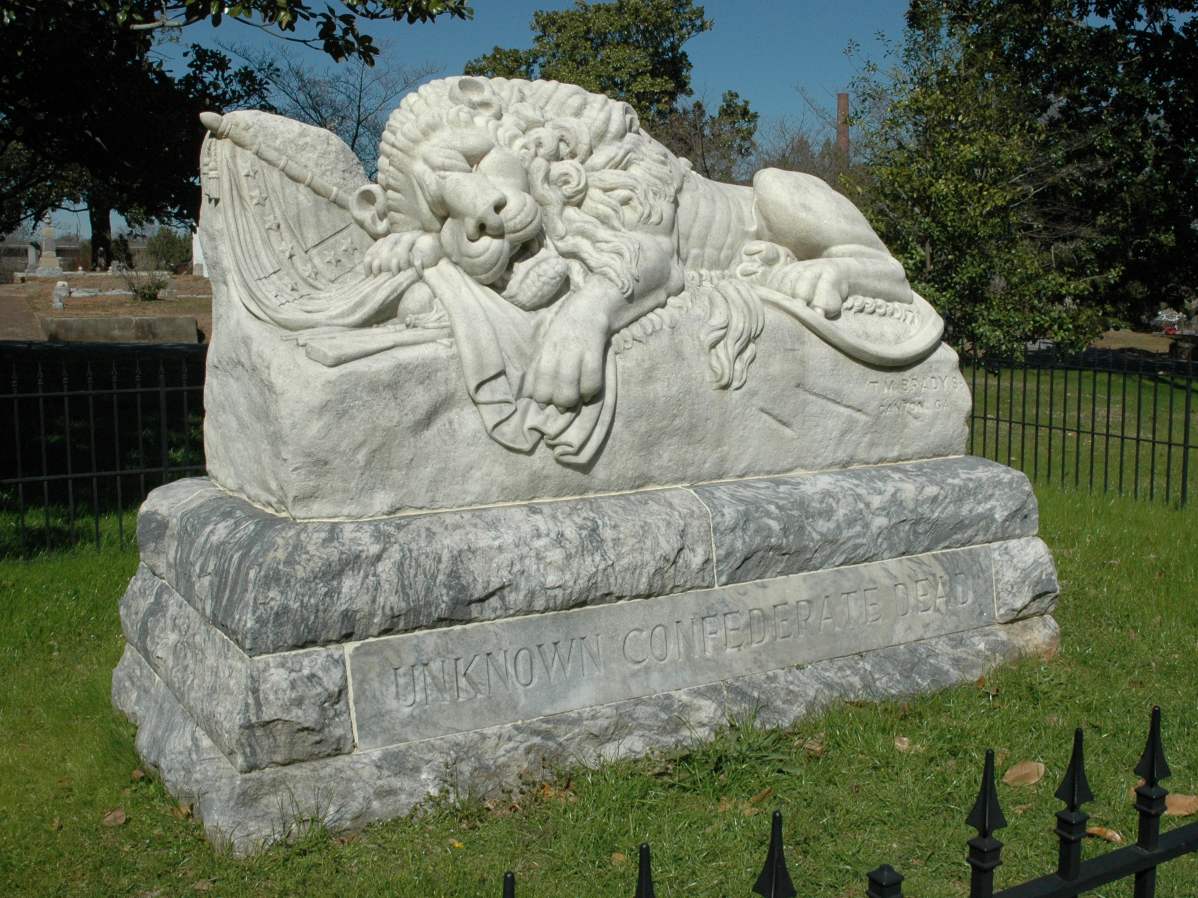This monument is located in a former sandstone quarry in Lucerne, Switzerland, and is dedicated "Helvetiorum Fidei ac Virtuti", or "To the loyalty and bravery of the Swiss". It portrays a dying lion protecting a shield which bears the fleur-de-lis coat of arms of the French Monarchy, and beside it is another shield bearing the coat of arms of Switzerland.
It was hewn in 1820-21 by Lukas Ahorn, having been designed by Danish sculptor Bertel Thorvaldsen. It commemorates the hundreds of Swiss Guards who were massacred during the French Revolution of 1792. The Guards were a group of mercenaries that were attached to the French monarchy from the early 17th century, and they were guarding the Tuileries Palace in Paris when the building was overrun by revolutionaries. Outnumbered and low on ammunition, many were killed in the fighting, and more were murdered after their surrender. What was left died of their wounds in prison or were executed during the September Massacres later that year, bringing the total to around 760 men. About 100 escaped Tuileries and a 300-strong detachment survived by being in Normandy at the time.
Below the sculpture is engraved the names of the officers and the approximate number of soldiers who died (DCCLX = 760), and survived (CCCL = 350). The sculpture was initiated by Karl Pfyffer von Altishofen, an officer of the guards who was on leave in Lucerne at the time of the fighting.
It remains a sobering testament to, what I feel, is the entirely unnecessary loss of life in the course of following one's perceived duty, orders or ideals. Sometimes violence is necessary to achieve some form of greater good, but the wanton massacre of prisoners and the murder of those who have surrendered to you is utterly inexcusable.
To truly appreciate the work of the Lion Monument, simply cast your eyes over the Lion of the Confederacy, a sculpture in Oakland Cemetery in Atlanta, Georgia.
The lion, which guards a field containing the remains of unknown Confederate and Union dead, was carved by T. M. Brady in 1894, and is a very near copy of (or at least, greatly inspired by) the Lion Monument from Lucerne. However, it has far less impact, despite being a monument to an equally tragic and powerful event. I feel that this is almost entirely due to the setting. The lion in Georgia is vulnerable and weak; it has been dragged out into the open to die alone in a field, surrounded by enemies and vultures. Compare it to the other Lion, which is at rest; although dying, he is safe and secure, having made his way to a favourite place in which to spend his final moments at peace. He may have been killed, but he is strong enough to die on his own terms, in the place that he chooses, knowing that he did his best. Perhaps Mark Twain summed it up better:
"The Lion lies in his lair in the perpendicular face of a low cliff — for he is carved from the living rock of the cliff. His size is colossal, his attitude is noble. His head is bowed, the broken spear is sticking in his shoulder, his protecting paw rests upon the lilies of France. Vines hang down the cliff and wave in the wind, and a clear stream trickles from above and empties into a pond at the base, and in the smooth surface of the pond the lion is mirrored, among the water-lilies.
Around about are green trees and grass. The place is a sheltered, reposeful woodland nook, remote from noise and stir and confusion — and all this is fitting, for lions do die in such places, and not on granite pedestals in public squares fenced with fancy iron railings. The Lion of Lucerne would be impressive anywhere, but nowhere so impressive as where he is."
Mark Twain, A Tramp Abroad, 1880


No comments:
Post a Comment